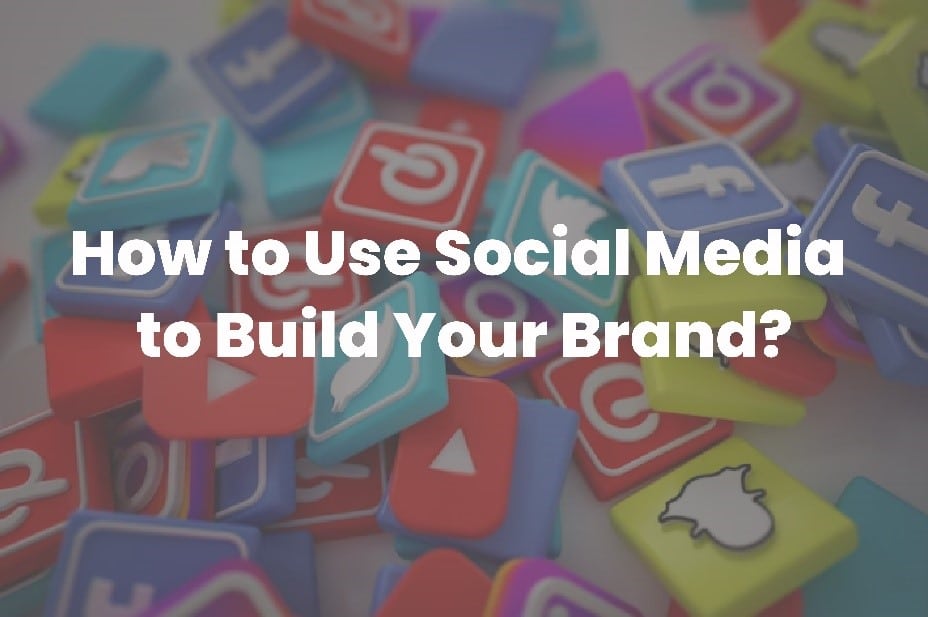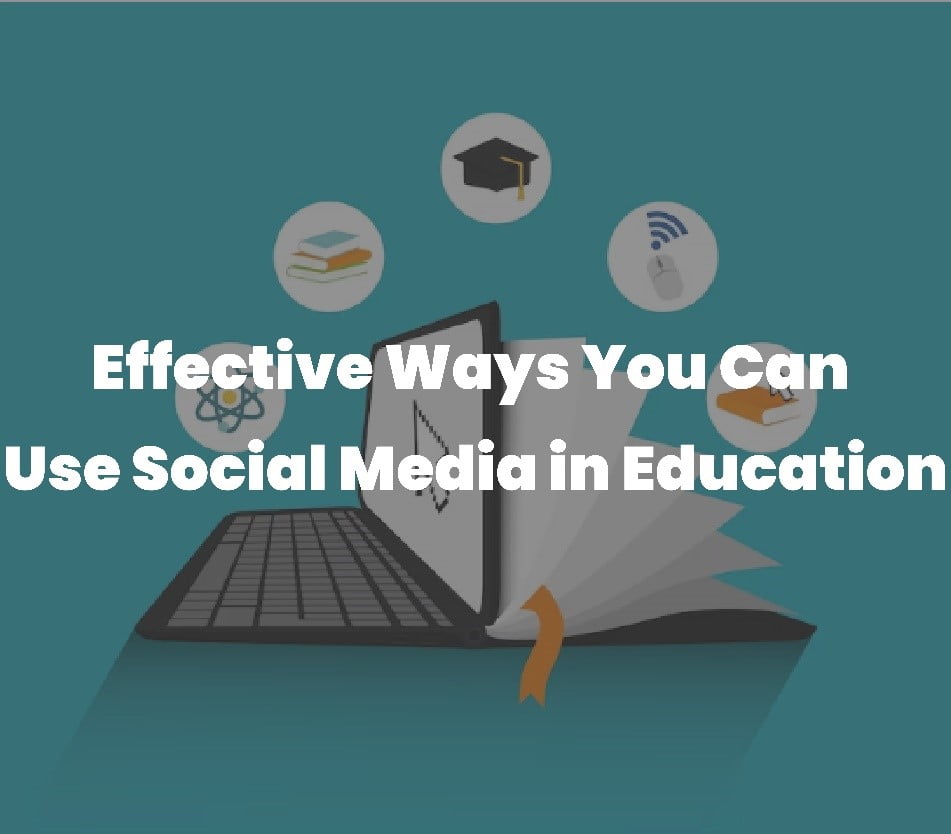How Can You Determine the Return on Inve
In the world of social media marketing, although the internet made it much easier, understanding the complex language of ROI (Return on Investment) can be a challenging task sometimes for both marketers and businesses. It is crucial to understand how to measure the success of your social media efforts to guarantee that every dollar spent provides significant returns. Join us as we embark on a mission to simplify the process of calculating ROI in the digital world.
Our goal is to provide you with all the answers you need to refine your tactics and optimize your social media marketing. By the end of this journey, you will have the knowledge necessary to calculate your ROI and determine the effectiveness of your social media efforts, ultimately ensuring your success.
Navigating the ROI Conundrum
Social media has become a massive platform where billions of people share, like, and comment on endless digital content. However, one burning question that echoes stronger than ever in the big theatre of social media marketing is – how can we measure the ROI of our social media endeavors?
To answer this question, we need to understand the complicated balance of data, engagement, and conversions, rather than focusing solely on the numbers. It is crucial to first understand the importance of ROI and how it affects the course of our digital efforts before we set out on this journey.
Together, let’s overcome this confusing task and come away with a thorough understanding of how to accurately calculate the return on investment (ROI) for your social media marketing efforts.
Social Media ROI: Uncovering the Mysteries
Return on Investment, or ROI, is the important indicator that evaluates how well your marketing initiatives performed with the resources used. In simpler terms, it answers the fundamental query: “Are the resources you’re investing in our social media campaigns producing visible results?” Understanding the ROI is the compass

That defines the strategies you use, whether your goal is to raise brand awareness, improve website traffic, or increase sales.
Understanding the ROI Calculation

Now that we understand what ROI is, let’s examine how to measure ROI in the context of social media marketing. ROI is mainly a calculation that calculates the net profit from your marketing efforts. Here is the equation:
ROI is equal to 100 times (Net Profit / Cost of Investment).
How Can This Formula be Used in Social Media Marketing?
To get an in-depth understanding there are certain terms you need to be aware of,
Net Profit: The money made as an outcome of your social media marketing efforts is generally referred to as the net profit. This includes overall sales revenue, lead-generating revenue, and any other tangible result.
Cost of Investment: Any expenses related to your social media efforts are included in the cost of investment. This covers expenses for tools, wages for employees, and content creation costs.
You could assess the outcome of your efforts by using this formula to calculate the effectiveness of your social media marketing efforts. A good ROI shows that your campaigns are generating returns on your investment that are higher than they were, whereas a negative ROI shows that improvements are required.
Setting Clear Goals
Setting specific and tangible goals for your social media campaigns is essential before you analyze any data. The goals you set will have an impact on the measurements you take to calculate ROI. Establishing certain goals enables you to match your approach with your desired results, whether your goal is to raise brand awareness, increase website traffic, or enhance sales.

Why are setting specific goals essential for calculating ROI? You may ask.
The basis of measuring success is to have clear objectives. When your goals are clear, you can monitor the exact metrics that are considered to be more significant to your company. For instance, you would concentrate on measures like click-through rates and visits to your website, if your objective was to boost more website traffic.
Social Media Offers a Range of ROI Metrics
The success of your social media marketing efforts shouldn’t be measured solely by revenue generated from sales. There are other metrics that you should consider to determine the overall impact of your campaigns. Here are some key metrics that you should keep in mind:
Conversion Rate: This metric measures the percentage of users who take a desired action, such as making a purchase or signing up for a newsletter, after interacting with your social media content.
Click-Through Rate (CTR): CTR tracks the number of clicks on your social media posts or ads relative to the number of impressions. It indicates the effectiveness of your content in driving traffic to your website.
Engagement Rate: Engagement rate quantifies the level of interaction your content receives, including likes, comments, shares, and retweets. It reflects the extent to which your audience is actively participating with your brand.
Customer Lifetime Value (CLV): CLV estimates the long-term value of a customer, considering their repeated purchases and loyalty. Understanding CLV is crucial for assessing the long-term impact of your social media efforts.
Cost per Click (CPC) or Cost per Acquisition (CPA): These metrics help you evaluate the efficiency of your advertising campaigns by measuring the cost associated with each click or acquisition.
ROI Analytics and Tracking Tools
These monitoring tools can help you determine the ROI of your social media campaigns by providing you with valuable information about user behavior, engagement, and revenues. By analyzing this data, you can assess which strategies are working and which ones need improvement. This allows you to make better-informed decisions about your social media campaigns, which can help you improve your efforts and ultimately achieve greater ROI. Platforms like Google Analytics, Facebook Insights, and Instagram Insights are just a few examples of tools that can provide you with the data you need to make these informed decisions.

Using Attribution Models to Value Interactions
Calculating ROI in the world of social media marketing requires a clear understanding of attribution models. Attribution models assign value to the different interactions a user has with your brand before the conversion. The customer’s journey can be analyzed using various models, including first-click, last-click, or multi-touch attribution.
How Can Attribution Models Improve Measuring ROI?
Attribution models assist you in assigning value to various touchpoints by taking into account the whole customer path to conversion. This enables you to understand how your social media efforts as a whole have affected the conversions.
ROI Optimization Strategies
Evaluating past performance is not the only requirement that needs to be improved for future campaigns. You need to gain insights from past performances and use them to enhance future campaigns. Here are a few effective strategies that can aid in boosting your social media ROI.

- A/B Testing: Experiment with different ad creatives, copy, and targeting options to determine what resonates best with your audience. Conducting A/B testing helps you to make your strategies better for achieving higher ROI.
- Audience Segmentation: Divide your audience into segments based on demographics, behavior, or preferences. Altering your content to each segment can result in more effective campaigns.
- Content Strategy: Investing in high-quality and engaging content that resonates with your audience can work wonders for you. Providing valuable content increases user engagement, which will eventually result in higher conversions.
- Budget Allocation: Strategically dividing up your budget is necessary. Focus on the platforms and campaigns that deliver the best ROI. Regularly assess and portion out your budget based on performance.
- Landing Page Optimization: Assuring your landing pages are optimized for conversions can make all the difference. Make sure to keep them simple, clear, and easy to navigate.
Conclusion
The struggle to perfect the skill of calculating ROI never ends. It takes a thorough understanding of your goals, a sharp eye for vital metrics, and the capacity to change or take your strategies according to the information you receive. so When you begin your journey on this road, keep in mind that ROI is not a static figure; rather, it is a representation of your efforts to engage with your audience, develop relationships, and ultimately produce significant results.
Therefore, conceive yourself with the skills, information, and motivation required to figure out the ROI conundrum. Understand the constantly changing nature of social media and take advantage of it. Access, analyze, grow, and then set out to sail once again because your quest for mastering the skill of ROI is an adventure with no bounds in this endless ocean of data as well as interactions.
As you learn new insights, you will continue to succeed and will be able to generate greater profits.
How to Safeguard Your Presence on Social
In today’s world, social media has become an integral part of our lives. However, it also comes with some drawbacks such as scams and identity thefts. To protect your safety and security on social media platforms, we have shared some important strategies that will help you stay secure while browsing the internet. Join us as we teach you these strategies to safeguard your social media presence and surf the internet with confidence and peace of mind.
If you are wondering how to protect your online presence whether it is on social media or while surfing the internet, here are a few tricks and strategies that’ll help you protect your online presence.
What Should We Do to Guarantee Our Safety on Social Media First?
It’s crucial to have a good understanding of the online world, especially when it comes to social media. Every social media platform has its own unique set of rules, guidelines, and threats. Therefore, it’s important to get familiar with the platform you’re using right from the start. Make sure to learn about their privacy settings, complaint processes, and terms of service. Knowing this information is the first step toward ensuring your online safety and security.
Building a Stronger Social Barrier
Just as a castle is strengthened by its walls, your online safety relies strongly on your privacy settings. Follow these steps to fortify your social barrier

Privacy Settings: Customize your privacy settings to control who can see your posts, access your personal information, and send you friend or follow requests. Restrict access to only those you trust.
Two-Factor Authentication (2FA): Enable 2FA wherever possible. This additional layer of security ensures that even if your password is hacked somehow, an extra code or verification step is required for access.
Regular Password Updates: Change your passwords occasionally, and use strong, unique combinations of letters, numbers, and symbols. Password managers can help you keep track of them.
Beware of Third-Party Apps: Be cautious about granting access to third-party applications through your social media accounts. Review and revoke access to apps you no longer use.
Guarding Against Fraud and Scams
Fraud attacks and scams are the lurking dangers of the online world. These deceptive tactics can trick you into revealing sensitive information or clicking on malicious links. Here’s how to steer clear:
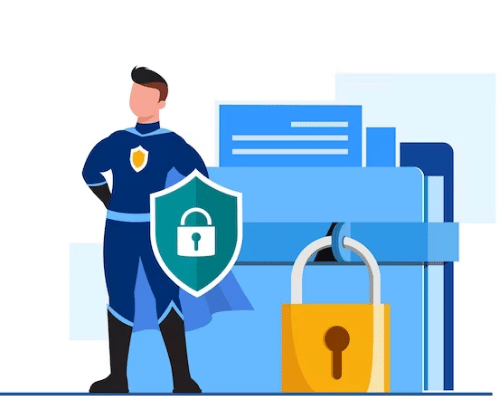
Be Skeptical: Approach anonymous messages, emails, or friend requests with skepticism. Verify the sender’s identity before taking any action.
Check URLs: Move your cursor of the mouse over links to preview the destination URL before clicking. Ensure it matches the legitimate website’s address.
Avoid Sharing Personal Information: Never share personal or financial information via direct messages or emails. Legitimate companies won’t request sensitive details in this manner.
Stay Informed: Stay updated on common scams and fraud techniques. Awareness is your best defense.
The Increased Awareness of Cyber Security
Cyber hygiene protects your online well-being in the same way that your hygiene protects your physical health. A good cyber safety routine includes:

Regular Updates: Keep your computer’s operating system, applications, and antivirus software on your device up to date. Security patches are frequently included as part of updates.
Safe browsing: Be careful of clicking on links, particularly those published by unidentified parties or in suspicious situations.
Limit the sharing of personal information on your public profiles, such as the location of your residence, phone number, or financial information.
Reporting Suspicious Activity: Inform your platform’s authorities if you come across harassment, hate speech, or abusive content.
Why is Good Cyber Hygiene Important for Safety?
Cybersecurity helps prevent unauthorized access to your accounts, protecting your safety, just like washing hands to prevent illness.
Awareness of Social Engineering and Alertness
Fake Friendships and Impersonation are two common social engineering tactics that cybercriminals use to manipulate their victims. They often create fake accounts that appear legitimate, so it’s important to be cautious before accepting friend requests or interacting with unknown accounts. Make sure to check the legitimacy of accounts, especially those that claim to be associated with well-known people, companies, or brands, and look for badges of verification when required.
Moreover, cybercriminals often use psychological strategies to win your confidence or pity. Therefore, it’s essential to be cautious about requests for help or stories of sudden feelings. Finally, it’s important to teach young people about web-based grooming methods and the importance of keeping personal information private.
Being a Responsible Online Citizen
In the world of social media, your actions can have consequences not only for your safety but also for the safety of others. To be a responsible virtual citizen, you should follow these guidelines:

1. Respect Boundaries: Always be considerate of other people’s privacy and boundaries. Before sharing their pictures or information, make sure you have their consent.
2. Verify Information: It is essential to make sure that the news or information you share is accurate. Misinformation can quickly spread and have adverse consequences in the real world.
3. Promote Positive Behavior: Contribute to developing a positive online community by engaging in enjoyable conversations and refraining from bullying or hate speech.
4. Educate Others: Inform your friends and family members, especially those who might be less familiar with technology, about internet safety and security.
Conclusion
Though the internet and social media are great tools to promote your brand or services, they also have their downsides. It’s important to safeguard your online presence, and this is not just your responsibility alone, but rather a collective responsibility. By implementing the security measures we’ve taught you, you can protect yourself in the virtual world and surf with peace of mind. However, in the unfortunate event of identity theft or hacking, it’s crucial to immediately inform the relevant authorities, deactivate or delete the account, and inform your friends and family to prevent further damage.
It’s important to remember that online safety is a repeat process, rather than a one-time fix. The key is to stay informed, adapt to new threats, and educate others. By working together, we can ensure that our safety and security are always protected on the internet and social media.
How Can You Use Social Media for Profess
Social media is more than simply a place to share funny stories and pictures from vacations, it has evolved over time and now in today’s interconnected world, it has become a powerful weapon through which so much more could be achieved.
It has become an effective tool that can influence both our personal and professional lives. Social media could serve as the hidden tool for your professional growth, helping you grow your professional career, build your network, or keep you updated in your field.
In this article, we’ll be looking at how to use social media wisely to progress in your career.
Developing a Strong Online Presence
The first step in your social media professional development path is to establish a compelling online presence. Your online identity matters as it serves as your online business card and could open up the door to opportunities you were unaware of.
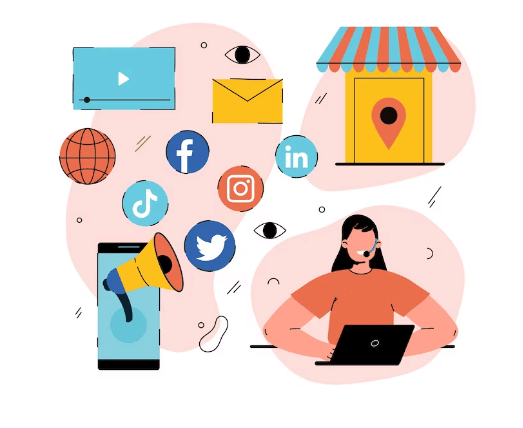
Create or update your profiles on websites like LinkedIn, Twitter, and even Instagram if your field is more visually driven. Create an interesting bio that highlights your experience and goals, and use a professional profile photo. Keep in mind that your internet presence should accurately represent your professional brand.
Connecting with the Right People
There are a ton of possible links and connections available through social media. However, you must build relationships with those who share the same goals as you. Choose LinkedIn as the ideal platform for establishing connections with friends, mentors, and business influencers LinkedIn is used by professionals all around the globe so it will be much easier for you to find the ideal people that you may be looking for.
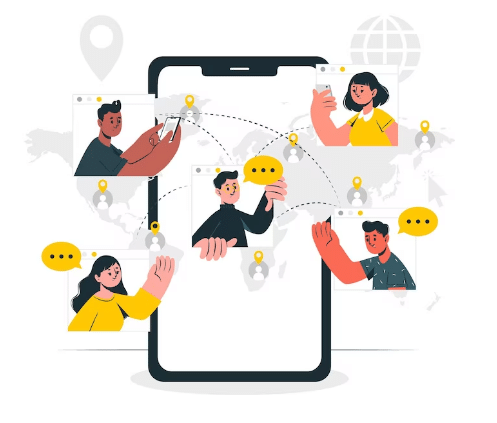
Look out for and follow thought leaders in your field of interest. Like, share, and comment on their posts to interact with their content. This not only keeps you informed of market trends but also makes you a las an active participant in the conversation.
Joining Relevant Groups and Communities
Almost all social media platforms offer groups or communities where professionals can come together to discuss challenges relevant to their industries. LinkedIn offers groups and discussions, Reddit has subreddits for almost every niche, and Facebook has groups. Join these groups to share thoughts, seek bits of advice, and stay updated.

Share your expertise and knowledge with these groups to make a meaningful contribution. Always keep in mind that professional development is a two-way process. You develop personally and professionally while helping others.
Creating and Sharing Content
Creating and sharing content on social media is one of the best ways to use it for professional development. Create a blog, publish articles, or share pieces of advice on social media about your field of expertise. In addition to showcasing your knowledge, content draws in people with similar interests.

Sharing clear, and precise informative views and articles on platforms like LinkedIn and Twitter are perfect for sharing. To make your content more visible, use hashtags that relate to your niche. The more high-quality content you create, the more your reputation as an expert in your field will grow.
Engaging in Thoughtful Discussions
Social media isn’t simply a place to share your opinions; it’s also a place to have deep conversations. Participate in discussions that involve your field or interests. Don’t be hesitant to share your opinion, even if it disputes what most people believe just make sure that your facts and figures are correct.
Always be respectful and open to other people’s perspectives. You may improve the arguments you make and increase your knowledge by participating in meaningful debates.
Making the Most of Learning Opportunities

Online workshops, live sessions, and course offerings are available on many social media websites. For instance, LinkedIn Learning offers a wide range of courses on different topics. Your professional development will benefit significantly from the fresh skills and information that you can get by enrolling yourself in these courses.
Networking Outside the Box
Geographical hurdles are removed thanks to social media, enabling you to make connections with professionals in your field all across the world. For your career, this worldwide access might be a game-changer. Engage in professional conversations with people from various backgrounds to gain new perspectives.
Keeping a Professional Attitude
Even though social media can be a useful tool for professional development, it’s still important to act professionally all of the time. Sharing content that can damage your reputation should be avoided from being offensive or controversial. In conversations, be aware of your words and tone because they represent your professional attitude.
Act of Balancing
Finally, it’s important to maintain a balance on social media between your personal and professional lives. Although occasionally sharing private information is acceptable, keep in mind that your main objective is professional advancement. Concentrate on contacts and content that align with your career objectives.

In conclusion, social media has developed into a versatile tool that can help you progress in your career if used the right way. The key to using social media effectively is to establish a strong online presence, build vital connections, participate in meaningful conversations, and take advantage of learning opportunities. That means you can completely utilize social media to develop your career and accomplish your career objectives by sticking to all of these strategies and operating professionally. Never underestimate the power of your online identity because it could be the key to opening up new career options for you.
How to Use Social Media for Your Persona
Indeed social media has become an important tool in today’s modern era. It has become more than just a socializing or entertaining platform. Fortunately, social media has become a potent tool for personal growth and development. Social media provides tremendous potential for one’s personal growth and development.
Social media can inspire self-improvement since it offers the chance to interact with like-minded people, access beneficial resources, and share ideas, thoughts, and information.
In this article, we’ll explore the idea of self-growth and development and how you can use social media to your advantage.
Take Control of Your Social Media Feed
Your thoughts and opinions are molded by the stuff you take in. Organize your feed to take control of your social media experience:

Follow people on social media who share the same goals for personal growth, such as helpful writers, motivational speakers, or entrepreneurs.
Accounts that frequently share hindering or negative information should be unfollowed or muted.
To expand your horizons, search for different points of view and voices.
You can create an environment supporting your personal growth by deliberately modifying your feed.
Join Communities of the Same Interest
Many groups and communities are available on social media platforms that are dedicated to specific interests or targets:

Join groups that relate to your areas of interest, whether they are business, fitness, meditation, or something else entirely. Joining groups that share like-minded interests can help you to self-develop as well as find more people who share the same interests as you, which can help you learn new things related to your area of interest.
Being a part of such groups can provide priceless knowledge, help, and motivation.
Learn and Share Knowledge
There are numerous opportunities to learn on social media:
Follow influential people and experts in your field and learn from them.

Share your knowledge, experiences, and things that you learned so that other people can benefit from it.
To develop new skills, take part in online seminars, live streaming, and enroll yourself in online courses.
You can increase your knowledge and grow into a useful asset for others by engaging in an ongoing cycle of learning and sharing.
Set Goals and Track Progress
Setting goals is a key part of personal development:
Make public postings of your goals and ambitions on social media so you can keep yourself motivated.
Share progress updates, celebrate your achievements, and reflect on the lessons you learned.

Encourage those who follow you to successfully establish and achieve the goals they have by building an online community that is encouraging.
By setting and sharing your goals, you not only keep track of your progress but also inspire others on their journeys.
Practice Mindful Consumption
Mindful consumption means being conscious of what you consume on social media:
To avoid excessive browsing, set boundaries and limit your scrolling time.
Take breaks from social media to recharge and reflect positively on your thoughts.
Take occasional breaks from your electronic devices and engage in digital detoxification to recharge your batteries and regain your focus.
By engaging in mindful consumption, you can make sure that your use of social media aligns with the goals you have for your growth.
Seek Mentorship and Guidance
Coaches and mentors are everywhere on social media platforms:
Find people who have accomplished the goals you have and ask them to be your mentors.
Connect with mentors by joining their groups or courses or sending them direct messages.
If you want to speed up your personal growth, be open to helpful criticism and guidance.

Social media mentoring can offer personalized guidance as well as quick ways to succeed.
Build Resiliency and Positivity
Social media can sometimes become a breeding ground for negativity and comparison:
By concentrating on improving yourself and learning lessons from challenges and losses, you can build strong resilience.
Share and acknowledge all of your accomplishments, no matter how minor or major they are, and be humble about it, to show your thankfulness.
Encourage people by making positive comments and providing positive thoughts and suggestions.

Positivity on social media promotes not only your personal development but also builds an optimistic online community.
Reflect and Writing Online
Social media can be used as a digital notebook throughout your journey of personal growth and development:
Share with your audience about your views, eureka moments, and unique ideas.
If you want to keep the contents of your writings more public, use specific hashtags or, if you want to keep it more concealed set up a private account.
Encourage an atmosphere of self-improvement, and invite your audience to share their thoughts and experiences.
By documenting your journey, you can expand your perspective, keep track of your growth and development, and motivate others to start their own personal growth journeys by reflecting upon your trip.
Conclusion
In conclusion, social media platforms have the potential to be powerful tools that can foster one’s personal growth. You can benefit from the opportunities offered by social media to accelerate your journey toward personal development by structuring your social media network, gaining knowledge, creating objectives, participating in discussions, and actively giving back to your community. So, do you have what it takes to utilize social media to its fullest extent as a tool for personal growth?
How to Use Social Media to Build Your Br
In today’s world, where everything is connected through the internet, the virtual world is more than just an online world. It reflects our personality, beliefs, and how we interact with the world.
In this world where social media is the pinnacle of all platforms, personal branding is more the process where you can create your identity for yourself and influence the way this world perceives you. But then the question that arises is:
How Can You Use Social Media to Create and Enhance Your Brand?
Worry not, Join us on a transformative journey through the rough seas of personal branding in the digital era. In this article, we’ll teach you strategies, insights, and tactics that will help you sail thoroughly through the ocean of social media. You will be equipped with all the necessary pieces of information, tools, and resources to become an expert in personal branding.
Throughout this journey, you’ll learn how to build a unique online presence and create meaningful connections with your audience. You’ll discover how to build a

Compelling a brand story that relates to your target audience, using data-driven steps to strengthen your digital marketing strategies and leverage your social media platforms to build your brand. By the end of this article, you’ll find creating the social media brand wasn’t that hard after all though it takes time and a lot of hard work.
So what are you waiting for, Get ready and set sail let’s help you build up a personal brand!
What is Personal Branding Exactly, and Why is it Important?
Personal branding is a strategically planned method of creating and managing your online brand to represent a particular image or identity of you. To create a unique and compelling persona, you need to identify and communicate your special qualities, values, and skills. Personal branding makes you stand out in the flock of content and puts you in control of your online existence.
Making Your Personal Brand Story
Your brand needs an integrated story, just as a ship needs a strong structure and a straightforward course. Start by addressing these important questions to yourself:

How Do You Feel? Examine yourself closely and acknowledge your strengths, passions, and values. What distinguishes you from other professionals who specialize in your field?
What Do You Hope To Achieve? What are your long-term objectives, and how do they fit with your personality and your field of expertise?
What exactly is Your Targeted Market? Understand the people you wish to connect with and engage with them as your target audience. What are their preferences, requirements, and challenges?
Why is it so Important to have a Personal Brand Narrative?
Your brand is shaped by the story you tell. It drives your interactions, decisions, and content to make sure every part of your online presence relates to your originality and purpose
Choosing the Right Social Media Platforms for Your Brand
In today’s world, social media is an excellent way to build and strengthen your brand. However, with so many social media platforms to choose from, it’s important to select the right medium that aligns with your brand objectives. Here are some factors to be considered when selecting your platforms:

1. Your Target Audience: It is crucial to determine where your audience spends the most time. For instance, if you’re a professional, LinkedIn might be ideal for you, while Instagram views may be more suited for visual artists.
2. Content Type: Different social media platforms cater to different content formats. Consider the type of content that best represents your brand. If you’re a storyteller, platforms like Medium or Twitter may suit more for your content.
3. Your Expertise: Determine where you can show your knowledge and expertise most effectively. For example, if you’re a photographer, platforms that emphasize visual content, like Instagram or Pinterest, may be more optimal for you.
Choosing the right social media platforms for your brand can help you reach and connect with your target audience effectively.
How Does the Decision of Choosing the Right Platform Affect the Impact of Your Brand?
By picking the right platforms for your business, you can make sure that only the right audiences see your content. You can target specific audiences in this way and create content that fits their interests and demands. To grow your audience and ensure that as many people as possible receive your message, you can use a variety of platforms.
Crafting Your Social Media Profile
This is one of the important components of your brand, your social media profiles should be built with care. Follow these steps to create a profile that accurately reflects your brand:
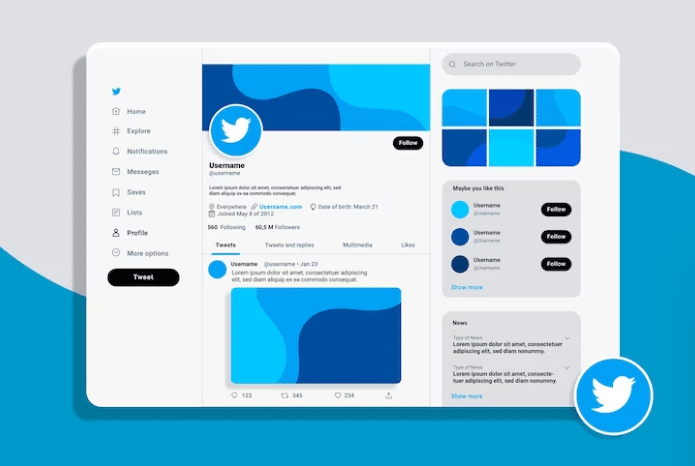
Consistency: Make sure that you use the same profile picture and bio across all platforms to create a consistent online identity.
Alignment: Your bio should communicate who you are, what you do, and what makes you unique. Highlight your value proposition and align it with your brand.
Visual Appeal: Choose visuals that resonate with your brand. Whether it’s a professional picture of yours or an eye-catching image, make sure it sets right with your narrative and appeals to your target audience.
Contact Information: Make sure that your contact details are easily accessible for those who wish to connect or collaborate with you. This will help you build meaningful connections and expand your network.
Why are Thoughtfully Designed Profiles Important for Personal Branding?
Profiles are incredibly important when it comes to personal branding as they are usually the first impression people have of you when they engage with you online. Therefore, it is essential to have a well-made profile that effectively communicates your brand identity, making it easier for others to comprehend and engage with you.
Sharing Your Content
Sharing your content is an important point of building your brand. To do so simply, you need to strategize your content creation and sharing. Here are some of the tips that’ll help you manage the world of content

Quality first: Always keep in mind quality over quantity when creating content. Your focus should be on producing high-quality content rather than a higher number of content, which should align with your expertise and relate to your audience. Compared to consistent offering, value is more important than frequent but shallow posts.
Content calendar: Create a content calendar that outlines topics, formats, and release dates. This ensures the growth of relevant content that keeps your audience engaged.
Engagement: Actively engage with your audience by responding to comments, asking questions, and participating in discussions related to your niche. This helps to build a relationship with your audience and establish yourself as a legitimate in your field.
Visual storytelling: Visual content, such as infographics or videos, can be powerful tools to convey complex ideas or tell interesting stories. Adding visual elements to your content can help you communicate your message more effectively and stand out from the crowd.
Why Does Content Play Such an Important Part in Personal Branding?
Your content and personality are displayed through your content, which acts as an instrument for communication. It helps you seize the opportunity to prove your worth, show off your abilities, and establish a much deeper connection with your audience.
Building Networks and Collaboration
You’re not alone in your niche there will be hundreds or thousands of others too so rather than considering them as competitors think of them as allies. Building alliances and collaborating with others can help you grow your brand’s reach. Here’s how:
Networking: Actively engage with individuals who share your interests or content. Connect with them, join relevant groups or forums, and participate in discussions.
Collaboration: Collaborate with others in your field for cross-match content, collaborative campaigns, live sessions, etc. Such partnerships introduce your brand to new audiences.
Guest Contributions: Contribute guest posts or articles to trusted websites or platforms in your niche. This expands your reach and positions you as an authority.
How Can Collaboration and Networking Promote Your Brand?
Collaboration and networking are like going on journeys with other experienced sailors. They stretch your perspectives, expose you to various audiences, and increase customer trust in your brand.
Tracking Your Brand’s Progress
It’s necessary to keep updated with your brand’s evolution as you grow in the world of social media.
Analytics, online reputation management, and feedback are all crucial components of a successful social media strategy. By monitoring key metrics like engagement rates and follower growth, you can gain insights into your audience’s behavior and make your content better according to their needs. Regularly searching for your name or brand online can help you address any negative feedback or issues quickly while asking for feedback from your audience can provide valuable insights for improvement.
Conclusion
Remember that growing your brand is constantly changing as we conclude. It involves creating a story that reflects your principles, openly sharing your knowledge, and getting involved with a community that connects with your message.
The secret to success lies in building relationships and developing a society with values of trust and loyalty. In addition, you must consistently communicate your message and work hard to improve the client experience. Finally, you must be open to criticism and use it to strengthen your brand.
Your personal brand is not just a virtual persona, it’s an ever-evolving legacy that you’re building. Always keep in mind that your brand acts as a guiding light, leading you toward a future where your unique personality and content shine bright on social media. As you continue to navigate through the vast horizon of social media, remember to stay genuine to your brand and let it be the driving force behind your online existence.
Expanding Your Social Media Presence, Ma
The world of social media can be overwhelming at times, with the constant allure of likes and comments on every post. But fear not, with the right strategies and understanding, you can improve your social media experience and build an active online audience around your content. In this article, we’ll share different tips and tricks to help you create engaging and interactive content that will boost your visibility on social media. By gaining more likes, comments, and followers, you can increase your reach and create an engaging social media presence.
Why is Engagement Important on Social Media?
Your social media engagement is the soul of your virtual presence. It means that your audience is actively engaging and interested in the content you provide. The connections, conversations, and relationships represented by likes and comments are more than just abstract numbers; they give your online personality life.
The Art of Engaging Content
To get more likes and comments on your content, it is essential to create content that relates to your audience. The first step to achieving this is by identifying your audience and understanding their preferences, desires, and the challenges they face. This knowledge will help you to create content that responds to their needs and desires.
Investing in visually appealing pictures of the highest standard can also help to attract your audience’s attention. Such images, movies, and visuals are more likely to make the scrolling thumb stop and engage with your content.
Another effective way to keep your audience engaged is by sharing narratives. You can tell stories, share personal experiences, and provoke thoughts and emotions through your content. By doing so, you can draw in viewers and keep them coming back for more.
Lastly, consistency is key. Keeping your posting routine constant and providing your audience with consistent, solid content will help keep them interested in your profile and increase engagement.
Making Genuine Connections
Meaningful engagement rests based on authenticity. Being authentic, creating authentic connections, and appreciating feedback from your audience are key elements of making an engaging crowd.
Responding actively: Respond to comments made by your audience right away and interact with them. Acknowledge and express your gratitude for their contributions.
Ask Questions: In your captions, propose interesting inquiries that encourage discussions and promote conversations. Encourage your audience to share their ideas and experiences.
Give a peek behind the scenes of your life or business. When your audience feels like they are a part of your journey, authenticity grows rapidly.
Thank Your Audience for Their Support and Feedback: Say thank you to your audience. The power of a simple “thank you” in building connections is tremendous.
Why is Social Media Participation Tied to Authenticity?
The thread that holds your audience to your content is authenticity. In your social media community, it promotes loyalty, trust, and a sense of connection.
How Crucial Timing is?
The timing of your posts has a significant effect on engagement numbers. It’s necessary to understand how your audience responds and when they are most interested.
Use social media analytics tools to find out when your audience is most engaged. Views define times when involvement was at its peak.
Try publishing at different times throughout the day and week as an experiment. Watch the engagement rates to figure out the ideal publishing timings.
If you are not online, use scheduling tools to make sure that your content is published when it is at its peak.
The Effectiveness of Hashtags
The online way posts that guide the audience to your content are hashtags. Make use of them wisely to increase your audience while promoting engagement.
Relevance: Pick hashtags that are relevant to both your content and your intended audience. Avoid using hashtags that are too general or overused.
Variety: Use a combination of hashtags that are both popular and specific. Your social media visibility is increased as a result of using these hashtags.
Think about creating a unique, specific-to-brand hashtag for your content. To establish a sense of belonging, and encourage your target audience to use it.
Cross-Promotion and Collaboration
Working together with other brands or persons of the same niche is often termed collaboration. Your content can reach new audiences by collaborating with influential people or brands that suit it.
Choose Partners: Decide which people or companies best fit your content or subjects. Look out for opportunities to work with others on projects or campaigns.
Cross-Promote: Spread the word about each other’s content by tagging one another in postings, conducting joint live sessions, or arranging giveaways
Make use of Guest posts: Allow partners or influencers to create posts for you or manage your account for a day. These strategies give birth to new perspectives.
Engaging Contests and Challenges
Contests and challenges promote the crowd’s excitement and participation. Create entertaining and engaging possibilities for comments and likes.
Photo Challenges: Encourage your audience to take part in contests that are centered around your specialty or theme. Convince them to use a particular hashtag that is made by you.
Run competitions requiring participants to post creative comments that were insightful. Give rewards to the most compelling ones.
Host trivia or quizzes that are connected to your content. Encourage audience members to give answers or comments.
Why Do Engagement Challenges and Contests Encourage Interaction?
Challenges and contests add an element of fun and competition, motivating your audience to actively engage with your content.
Monitor, Adapt, and Evolve
Engagement on social media is a constantly changing setting. Consider feedback from your audience, keep an eye on your stats, and adjust your strategies as applicable.
Review feedback from users and engagement metrics regularly while reviewing insights. Assess patterns, and then alter your posts and content tactics to them.
A/B testing: Use A/B testing to compare various strategies. Try with different captions, content genres, and posting times.
Be Informed: Keep yourself updated on changes to platform algorithms and social media trends. Adjust your tactics to make use of the latest specs.
Conclusion
Remember that the art of likes and comments is a constant journey as we come to conclude this article on the world of social media engagement. Create engaging content, prioritize authenticity, make use of scheduling and hashtags, analyze teamwork, and infuse fun with challenges and competitions. Keep track of your growth, adjust to the changing virtual fluctuations, and grow with your audience.
Your social media profile is a blank canvas for you to paint on, and interaction is the rich color combination that gives life to your blank canvas. By developing this skill, you can transform your online interaction into an exciting work of art, where each likes and comment acts as a brushstroke of friendship and connection.
Therefore, don’t be hesitant to express your creativity. Just bear in mind to keep a positive impression of yourself.
Effective Ways You Can Use Social Media
Since gaining worldwide recognition in 2010 social media has evolved ever since. From promoting your brand to self-growth to growing professionally. When it comes to the use of social media in education it gets controversial. Many educators believe the use of social media as a teaching tool can open a wide range of benefits for learning.
The introduction of remote learning and the addition of modern innovations like artificial intelligence (AI) have made social media an even more vital component of the educational process than in the past.
If you are an educator and you are looking to keep up with the trends and strategies to spice up your educational channel or brand or you’re a teacher looking for ways that you can adopt to make your lectures much more interesting then you are in the right place.
In this article, we will discuss the tricks and strategies that you can adopt as an educator, to utilize social media effectively for learning while keeping the focus on effectiveness and its advantages.
Advantage 1: Extending Learning Opportunities
The potential for increased learning opportunities is one of the main advantages of adopting social media in high schools and universities. The context of education has changed, with online learning and remote job opportunities becoming the new standard. To prepare students for their future careers, it is essential to provide them with the computer skills, internet literacy, remote communication, and work skills they need.
For educators, social media platforms are great resources for a wide range of methods. These tools provide an array of ways to interact with students, from delivering important notifications to giving live lectures. Adopting social media as a teaching tool has become vital as the world gets more interconnected. It promotes an environment where learning surpasses borders and students can connect with sources and institutions directly from across the world.
Advantage 2: Increasing Engagement
Undoubtedly, engagement is an essential component of successful education. The benefits of student engagement in their education tend to be amazing. Anyone who has found themselves checking Instagram constantly can relate to the fact that social media is excellent at capturing attention. Social media’s influence and its effects on education are simultaneously expanding.
The educational programs can be given new life through the integration of social media platforms into the teaching and learning process. Having access to a variety of resources that can be used to enhance and clarify learning concepts is made possible by these platforms. Social media plugins can be used to enhance educational content and make it more interactive, encouraging student collaboration and sharing.
Advantage 3: Connecting the Educational System
Social media influences outside of the classroom by bringing together parents, teachers, and students in a healthy educational atmosphere. The success of students depends on frequent interaction and cooperation between all of these parties.
The use of social media to improve communication is now being acknowledged by many educational institutions. For instance, assignments and announcements can be shared on Facebook Pages, making it easier for students to receive information on their preferred devices. Facebook Groups provide a safe environment for making announcements, assigning homework, and even hosting live-streamed lectures on the internet.
Twitter, which tends to be connected to publicity, can be a helpful resource for educational institutions. Because of the character limit, students are urged to express themselves concisely and thoughtfully, which is a worthwhile learning experience as a whole. It also provides a forum for parents to interact with teachers, discuss issues, and organize events for different age groups.
The Modern School Bulletin Board
Children of today are already excellent at using the internet to look for help with their schooling because they were born into the digital age. Including Social media incorporation in their courses serves as an obvious next step. It transforms social media sites into online learning forums.
Using the internet for research is important in today’s society. You can also post a public essay on Facebook or Instagram and get comments from other users. Social media is evolving into the new school noticeboard.
Educational institutions should explore further the concept of a virtual bulletin board.
Developing Collaborative Learning Environments
Alongside its many benefits for communication, social media promotes collaborative learning spaces where students can coexist happily. Platforms like WhatsApp or Discord can be used for project collaboration and group chats. Students can work together to solve tricky problems thanks to these tools, which promote learning through working with each other and collaborating. By embracing the cooperative features of social media, teachers can encourage their students to take an active role in their learning, resulting in greater understanding and information sharing.
Conclusion
In conclusion, schools and universities need to explore the potential of social media use in the classroom. It is an important tool for modern education because of its capacity to increase learning opportunities, improve engagement, and connect the educational system. Teachers can provide students with an exciting, engaging learning experience that prepares them to enter the digital age by wisely using the opportunities with social media. Indeed, social media has replaced the traditional school bulletin board, and its influence on learning is only growing, predicting a better future for students all around the world.
Effective Ways You Can Use Social Media
With the rise of inflation, everyone is trying those extra bucks that can help them survive in this world. This may sound controversial but making money has never been this easy also in 2023. Yes, you read that right the internet has made making money so much easier. With mentors and financial coaches easily accessible on social media platforms help people grow financially.
In this digital era, social media possesses the power and potential to be much bigger and beyond the usual likes and shares, where screens are our constant companions. Social media platforms may serve as productive tools for increasing and improving financial literacy, enabling people to make smart financial decisions.
In this article, we will explore the tips and tricks that you can utilize on how to use social media for financial literacy. So stick with us to the end to learn and adopt these strategies to uncover the true potential of social media and make money.
Tackling Difficult Financial Concepts
The difficulty of understanding financial terms and concepts is one of the main obstacles to financial literacy. Social media platforms can make these concepts easier to understand by using infographics, short clips, and simpler easy-to-understand explanations.
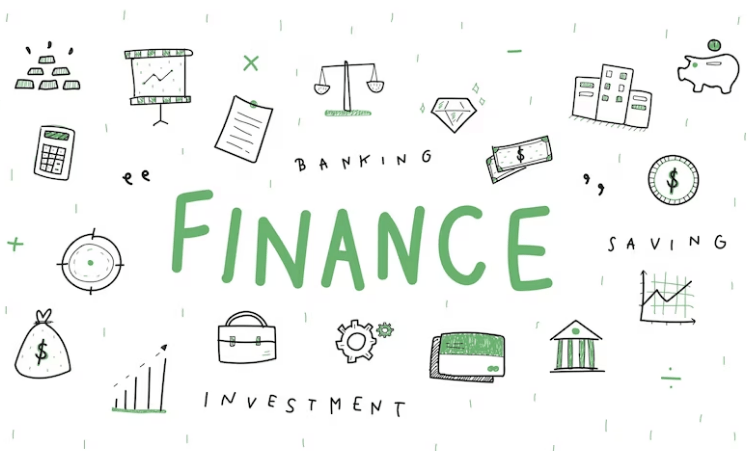
Take note of the growing popularity of financial mentors and coaches on platforms like TikTok views. They make complicated concepts like financial management, investing, and retirement planning accessible to a larger audience by breaking them down into manageable pieces of knowledge. Social media makes complicated financial terms comprehensible in this fashion.
Sharing Practical Tips and Strategies
Financial gurus, bloggers, and enthusiasts have a forum on social media to share useful guidance and techniques for handling money wisely. Platforms like Instagram and Twitter are excellent platforms for guidance, whether you need help managing your credit ratings or saving for a rainy day.

These websites offer a wealth of information for setting financial goals, setting budgets, and investing. People can find potential steps that they can take to strengthen their financial situation and guarantee their future.
Hosting Live Q&A Sessions and Webinars
People have the opportunity to interact directly with financial professionals through live Q&A sessions and webinars on platforms like Facebook Live or YouTube Live. Users can ask questions and get specialized financial advice based on where they stand during these interactive conferences,

Social media is frequently used by financial experts and financial advisors for organizing sessions on different topics including investing techniques, debt management, and retirement planning You can take part in conversations in real time while relaxing in your homes and learning valuable things.
Promoting Financial Goals and Challenges
The most effective methods for encouraging financial discipline are through challenges and setting goals. People can utilize social media as a forum to discuss their financial struggles, such as saving a certain amount of money each month, eliminating debt, or making regular investments. By sharing their goals and objectives they not only get motivated themselves but also inspire other people to achieve their goals too.

On social media sites like Instagram and Twitter, the hashtag culture encourages users to interact with people chasing the same objectives and to share their progress and experience on the journey they had. These challenges promote a sense of responsibility and unity, encouraging people to follow their financial objectives.
Raising Awareness About Scams and Fraud
The most important aspect of financial literacy is knowing how to protect yourself from financial fraud and scams. People can be instantly alerted to potential frauds and scams and also can be advised on how to prevent them through social media.
Profiles and pages dedicated to cybersecurity and fraud prevention share information on common scams and guide on protecting your personal and

Financial information Social media users can protect their financial security by staying educated on possible scams or frauds.
Promoting Tools and Apps
A variety of financial tools and apps that can help you with money management have emerged in the market in today’s digital era. Social media is an ideal platform for introducing users to these valuable tools and applications.
On websites like YouTube and LinkedIn, you may get reviews and suggestions for financial apps like investment platforms and budgeting tools. Users can choose tools that are suitable for their financial objectives with the help of these insights.
Conclusion
In conclusion, social media can be a powerful tool for increasing your knowledge about finances if used right. It offers helpful advice, breaks down difficult financial topics, and holds interactive sessions. It promotes setting goals and increases knowledge of scams and other forms of fraud. It also offers practical financial tools and apps that can help you with managing your finances.
Acknowledging the potential of social media for improving your financial status is important as we travel the world of technology. By utilizing these channels, people and organizations can work together to build a society where financial literacy is valued and available to everyone. Social media has the capacity that shake up wallets, initiate financial conversations, and open the door to a future where people are more financially independent.
Challenges and Limitations Faced by Sma
Which is the best medium to promote a business or a brand whether it is a multinational or a startup, without any time wasted social media is the first thing that pops up in your brain. With over 3 billion users worldwide it is the best medium to launch a small brand or even a startup.
Startup businesses serve as colorful threads that add to the diversity and Adaptability that make up the global business a community’s huge covering. However, these businesses face plenty of challenges on their way to attaining prosperity, which requires a lot of creativity, adaptability, and modification. So if you are an entrepreneur or a small business owner looking to prosper in the huge ocean of the business world.
Join us on an exciting and beneficial journey as we teach the different difficulties faced by small businesses share creative solutions and allow you to grow and thrive. With the successful application of these ideas, we want to inspire and encourage the overlooked entrepreneurs who are not afraid to have big dreams but also work little jobs as well.
The Peak that Small Businesses Must Conquer
Communities rely heavily on startups since these businesses inspire creative thinking & generate job opportunities, and provide specialized goods and services. However, because of their small stature, they frequently get confronted with several kinds of difficulties that must be addressed with the ability to adapt and intelligence.

Limited Financial Resources
The most common problem that small businesses suffer is a lack of finance. Each component of the company could be negatively affected by this limitation, including employing new employees, marketing, and growing.

How Can Small Companies Overcome Their Lack of Funding?
Budgeting and planning: Make an in-depth budget that gives priority to the required expenses and efficiently manages funding. Keep an eye on your budget and make any adjustments necessary.
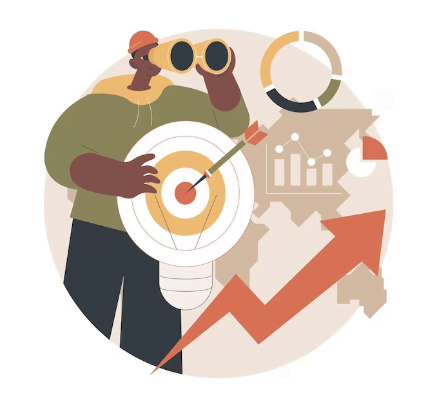
Get financial planning: Explore different kinds of financing, such as crowdfunding, which means small startups can be financed by, government funding, and angel investors. Each resource has its own set of limitations and advantages.
Use Technology: Make investments in smart tech solutions that reduce expenses and speed up the systems.
Why is Responsible Money Management So Important for Small Businesses?
To make the most, and best possible utilization of the resources one has, small businesses need to practice effective financial management.
Marketing and Visibility
For small businesses, standing out in an increasingly competitive marketplace could appear to be an impossible task. The ability to connect and engage with the target audience can often be problematic due to limited marketing resources and finances.
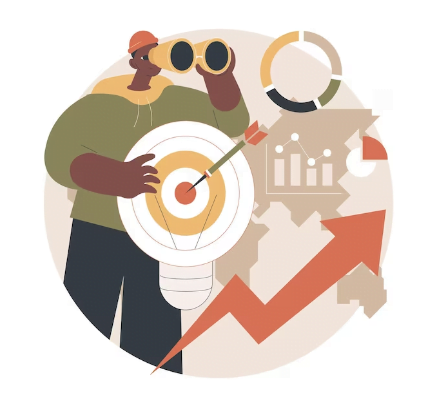
How Can Entrepreneurs Improve Their Marketing and Advertising Initiatives?
Digital Presence: Create a solid online presence by maintaining active social media accounts and a user-friendly website. Use content for marketing purposes to draw attention to your abilities.
Content/material strategy: Create interesting and relevant items/content that relate to the challenges and interests of your audience. Trust is built through frequent and helpful content.
Utilize Customer Reviews: Motivate happy customers to share positive feedback on sites like Yelp or Google My Business. Reputation and trust are increased by positive reviews.
Why is Successful Marketing So Important for Small Businesses?
Effective marketing improves the popularity of the brand, draws in customers, and promotes consumer trust in the company.
Competing with Larger Players
Small companies often compete against the industry’s juggernauts with huge assets and longstanding customers. Being compelled to battle on a disadvantageous level might be scary.

How Can Smaller Companies Successfully Compete with Bigger Players?
Niche Specialization: Identify a niche within your industry and be an expert in it. Become known as the go-to expert in that specific field or area.
Personalized Customer Service: Offer personalized and supportive customer service. Build strong relationships with your customers to build loyalty between them and your brand.
Innovate: Take advantage of your creativity and adaptability. More quickly than larger sharks, small businesses can easily alter their course and put new policies into place.
Hiring and Retaining Talent
For small firms, hiring and keeping skilled workers can be challenging. They typically can’t provide the same benefits and advantages as bigger businesses can,

How Can Small Companies Find and Hire These Talented Workers?
Culture and Values: Promote a positive company culture and its core values that align with the inspirations of these employees.
Professional Development: Create potential chances for staff promotion and skill development. Encourage a mindset to develop and grow
Flexible work arrangements: Consider giving remote work choices or flexible work hours, which are becoming a lot more appreciated and welcomed by employees in this modern era.
Why is it Important for Small Firms to Attract and Keep Talent?
Skilled and motivated employees are a valuable asset that contributes to a small business’s growth and success.
Cybersecurity Threats
Small firms are especially at risk from cybersecurity threats in this modern digital era. Data breaches, financial losses, and damage to reputation can all be caused by cyberattacks.
How Can Small Businesses Protect Themselves from Cybersecurity Threats?
Employee Training: Train your employees on cybersecurity best practices like identifying spam emails and using stronger passwords.
Firewall and Antivirus: Invest in reliable firewall and antivirus software to protect against malware and cyberattacks.
Regular Updates: Keep your software, applications, and security systems up to date to patch flaws if any.
Why is Cybersecurity Protection Critical for Small Businesses?
Cybersecurity protection protects sensitive data, customer’s trust, and the overall stability of a small business.
Community and Adaptability
Small businesses are benefited by having strong relationships with their local communities. Making use of this connection will help you grow and overcome challenges.
How Can Small Enterprises Successfully Interact with Their Local Communities?
Community Involvement: Participate in local events, sponsorships, or collaborations. Support community initiatives and charities.
Respond to feedback: Actively look out for community and consumer feedback. Take advantage of this information to change and enhance the products and services you provide.
Building Customer Relationships through
Social media is all about connections and maintaining these relationships. Which can help build your brand. Building a brand and its social media and then ignoring its engaging customers will hinder the success and growth of the brand. All the successful brands and influencers engage with their audience to keep up with the needs and desires of their audience but also to turn them into potential leads and sales.
These platforms give an ideal opportunity to engage, communicate, and create a community around your business alongside acting as marketing tools. In this article, we will look at the tactics and strategies that you can use for social media to create and maintain lasting relationships with your valued customers.
The Power of Customer Relationships in the Internet World
It is important to understand the value of strong customer relationships in today’s digital world before getting into the details of using social media for building customer relationships. These interactions stretch beyond a one-time deal; they are the backbone of client loyalty, support, and long-term success.
Increased Customer Loyalty: Despite competition, audiences who connect personally with your brand are more likely to stay loyal.
Positive word-of-mouth: Happy customers who have positive experiences with your brand turn into brand ambassadors who promote positive information about the company and bring in new customers.
Strong connections with customers offer an open channel of communication to receive feedback, helping you to continuously enhance your products and services.
Increased Lifetime Value: Loyal customers tend to make repeated purchases and contribute massively to your revenue over time.
1. Listen and Understand Your Audience
Understanding your audience is the initial step toward building successful customer relationships. Are you aware of the desires, challenges, and objectives of your customers? Social media offers a direct channel of communication for listening to what your customers have to say.

Keep an eye on direct messages, comments, and mentions on your social media account regularly. To learn about customer preferences and opinions, use social listening strategies. You can easily customize your interactions the more you understand your audience.
2. Make Your Brand Authentic
Does your company have the human touch, or is it a faceless brand? Your brand can become more relatable and appealing on social media by humanizing it. Showcase the people side of your business by showing your audience your company’s milestones and providing behind-the-scenes peeks of your staff members.

Share your employee success stories, highlight customer’s wins and achievements that are related to your firm, and engage in conversations that show the people behind your brand.
3. Offer Useful Content
Are your social media posts solely promotional? Or do they add value to your audience’s lives too? Sharing valuable content, such as how-to guides, tips, and informative articles, shows how much are you committed to helping your customers.

Create a content calendar that balances promotional content with informative and educational posts. Your content should address your customers’ pain points and interests.
4. Respond Promptly and Thoughtfully
Do you leave your customers hanging when they reach out to you on social media? Establishing trust and connection with customers can be achieved by responding promptly and thoughtfully to their questions and comments.

To make sure you never miss a message or comment, set up notification messages. Be sure to respond right away, regardless of whether it’s only to say hello to their comment or answer their question while you collect additional info.
5. Customize your Interactions
Are your comments cold or boring? Customers love it when you call them by name and respond to their particular issues or concerns.

Referring to previous conversations where needed and using the customer’s name while addressing them brings out a sense of being important. Customize your responses to the particular needs of each consumer.
6. Engage in Two-Way Conversations
Do you view social media as a means of one-way communication? Having in-depth discussions with your customers can increase their sense of connection and loyalty.
Encourage conversation on your social media channels by asking questions that are open-ended while actively engaging in discussions and conversations. Show a genuine interest in the feedback from your customers.
7. Loyalty Rewards
Do you appreciate and respect your devoted customers? Social networking is great for recognizing and honoring your most loyal fans. You must reward or give special discounts to your loyal customers because they are the leading cause of generating sales as well as they are free advertisement and could bring in new customers.

Create membership rewards or points or unique promos just for your social media audience as a solution. Highlight their accomplishments and brand-building efforts.
8. Showcase User-Generated Content
Are you using the content your customers create for your brand? User-generated content is a powerful way to highlight your customers’ experiences and a sense of community.
Encourage customers to share their experience and mention your brand as an option. Post user-generated content on your social media profiles and give credit to the creators along with an appreciation post.
9. Apologize and Make Changes
Have you ever made a mistake or received negative feedback on social media? Well, we are human beings every now and then we all make mistakes but, Handling such situations with humility and committing yourself to resolving the issue is what it takes this will not only build further trust in you but also, improve your and your brand’s reputation.
When faced with criticism or negative feedback, respond promptly, acknowledge the issue, and offer a solution or apology as required according to the situation. Show your dedication to making things right.
10. Monitor and Adapt
Are you continuously improving your customer engagement strategies on social media? You can monitor the success of your initiatives by analyzing important performance metrics.
Track customer feedback, response timings, and engagement rates. Use all of this data to improve your social media efforts and improve according to evolving client requirements.
Conclusion
In conclusion, social media is not just a platform for promoting your brand’s image it is also to build real long-lasting strong relations and connections with your customers You can turn your social media profile into a center filled with helpful connections by putting these ideas and strategies to use along with adopting the practice of being attentive, tailoring, and engaging. So, are you willing to begin out on this journey to develop long-lasting relationships with your customers using social media? The path is pretty clear and easy now, and within it is limitless potential for growth and commitment.




